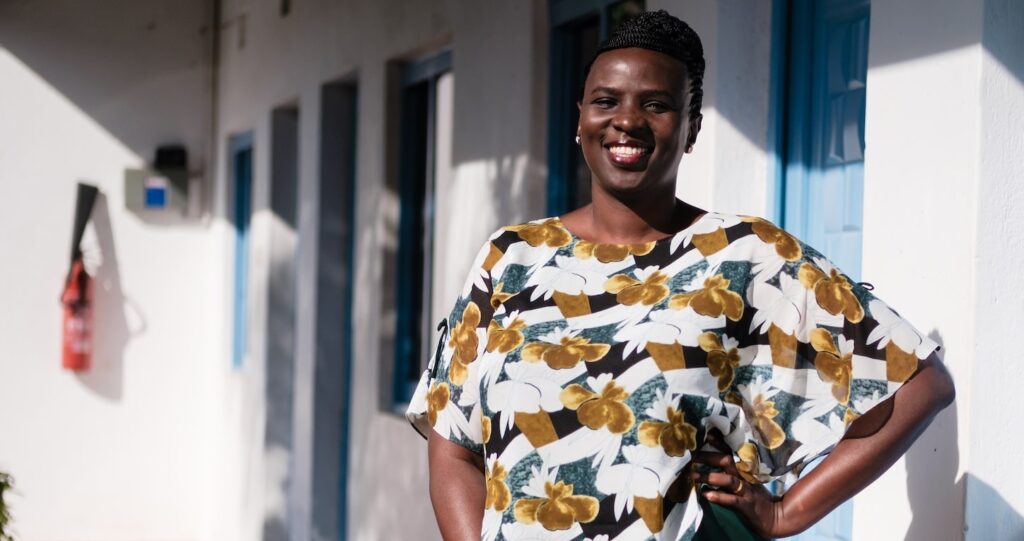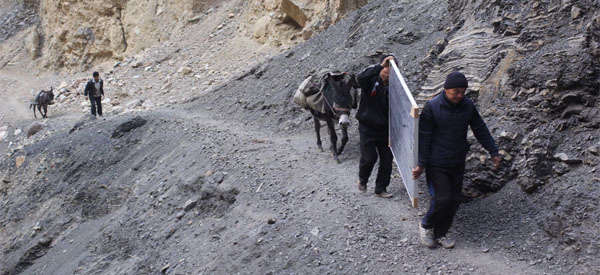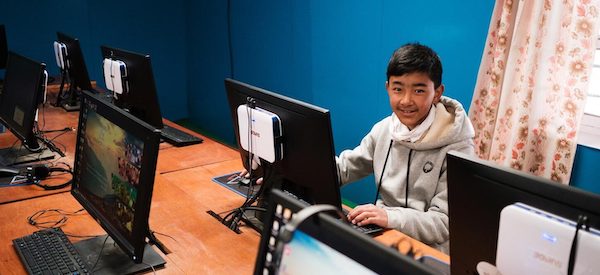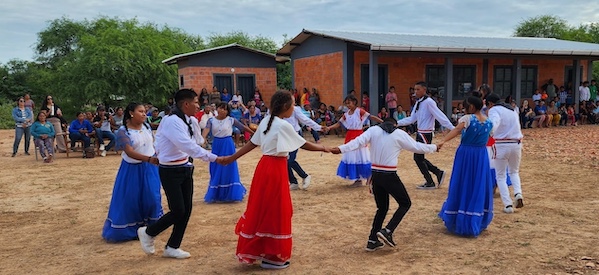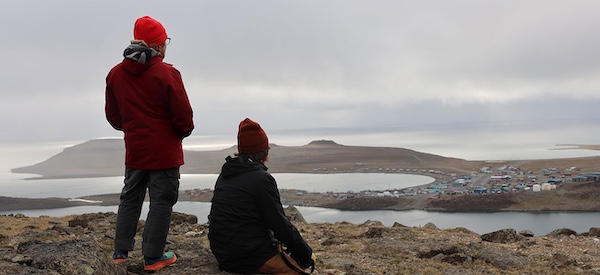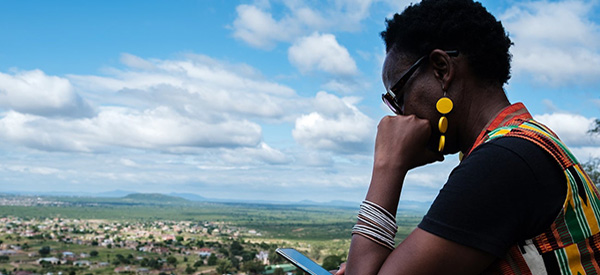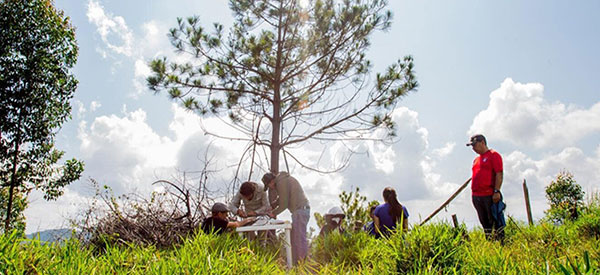List of posts displayed on a map
Africa
Zenzeleni Community Network The Zenzeleni community network connects over 50 households in the rural communities of Mankosi and Zithuleleat in South Africa. This wireless-based network provides Internet access to a local hospital, offering a bandwidth of more than 30mbps. Operating since 2020, the network also includes computer labs in Mankosi’s primary and secondary schools and computer literacy training for teachers.
Pamoja Net Pamoja Net, a community network operating on the island of Idjwi in Lake Kivu (Democratic Republic of Congo), is a unique model. It is based on businesses that pay for dedicated access during the working day and offers free Wi-Fi to the community from 16:00 onwards. This innovative approach ensures the sustainable operation of the network while providing free access to the community, a win-win situation for all.
Murambinda Community Network The Murambinda community network is located in the rural Bahera district of Zimbabwe. It comprises four community Wi-Fi spots and provides Internet access to over 50 households. With an aggregate bandwidth of 20mbps, the network also provides connectivity to surrounding schools, the nurses’ training school, council offices, and farms.
Mamaila Community Network This community network is not active.
Fantsuam Community Network Fantsuam community network connects over 50 households in Kaduna state, Nigeria. Operating since 2021 as a small network, it offers an aggregate bandwidth of 10mbps and connects a local school and a community center. The network provides access to online government services and assists this small community in accessing online resources.
BOSCO Uganda Battery Operated System for Community Outreach (BOSCO) Uganda is a not-for-profit, faith-based organization founded in 2007 in the Gulu district in Northern Uganda. With about six ICT centers at the beginning, BOSCO Uganda now has about 55 rural community network-based development centers with over 60,000 beneficiaries in the Northern and West Nile regions in Uganda, part of them supported by the Internet Society in 2020.
Groot-Aub Community Network This community network in rural Namibia is part of the Afchix initiative and is more than just a wireless connectivity solution. It has been instrumental in empowering the local community, particularly women, to find online jobs, thereby contributing to their economic independence and the community’s overall development.
Lanet Umoja Community Network This community network connects over 50 households in the rural community of Lanet Umoja in Nakuru County, Kenya. It runs on wireless and offers an aggregate bandwidth of 40mbps. The network also connects the local school and provides various training courses on women’s empowerment and digital literacy.
Ait Izdeg Community Network AFCHIX leads this community network to expand Internet access in rural areas in Ait Izdeg, Morocco. The project focuses on training local women to maintain the infrastructure and develop sustainable business plans to establish and manage community networks. These digital training programs also teach technical skills to install and maintain the hardware necessary to run a community network, including towers and modems, which opens up entrepreneurship.
Ekwendeni Community Network The Ekwendeni Community Network project is an initiative implemented by the Centre for Youth and Development with funding from the Internet Society since 2022. The project aims to set up an infrastructure that will be the gateway for the community to access information and improve education, health, and economicopportunities for the general population. It is being implemented in conjunction with the Ekwendeni community under theleadership of the Inkosana Kajiso Shaba.
Kisumu Community Network This community network connects over 200 households in rural Kisumu County in Kenya. The network has established hotspots in market areas that enable local enterprises to operate part of their businesses digitally. With an aggregate bandwidth of 40mbps, this network offers Internet access through community centers where the residents can meet and share information regarding various activities depending on group interest, from new farming methods and goods prices to new ideas through group activities.
Latin America & Caribbean
Oaxaca Community Network Working with the Internet Society and the the Internet Society Mexico Chapter, REDES AC and several organizations partnered in 2018 to deploy community networks in four Indigenous communities: Ayuujk, Zapotec, Wixárika, and Tseltal. Since then, they have worked closely with the Internet Society and received further support.
El Cuy Community Network This community network connects over 150 households in the town of El Cuy, a remote area of the Argentinean Patagonia. Since 2020, this wireless network has offered an aggregate bandwidth of 40mbps, providing Internet access to the local school, hospital, and community center. Since there is no telephone line, locals communicate with their families in other towns through messaging apps.
RedINC Community Network RedINC community network (short for Indigenous, Black, and Peasants Network in Spanish) serves nearly 50 households living in a pacified zone of Colombia. The network runs on a mobile 4G technology offering a 20 Mbps bandwidth to keep this small community online, and provides Internet access to local homes and a local school.
Espírito Santinho Until 2019, the Internet was out of reach for most residents in the rural community of Espírito Santinho, located in the state of Rio de Janeiro. Since then, they have deployed Brazil’s first fiber community network in a partnership model with a local small service provider.
Reyeshogpan Community Network A pilot effort in 2020 by the community of Reyeshogpan, Cuetzalan del Progreso, Puebla led to the development of an LTE Mobile Community Network Service by Telecomunicaciones Indígenas Comunitarias. The Mobile LTE final services were later implemented in Mexico and Colombia.
Santa Rosa Community Network This community network is part of the NANUM—Connected Women initiative, offering Internet access to nearly 50 households of Indigenous women in the Chaco region of Paraguay. The network runs on wireless technology, connecting a local school and hospital. The network offers digital literacy training to women, helping them publish local content and news. This helps them promote local farming businesses and publish their native culture and oral and written language.
Veryvine Community Network This community network is not active.
Puesto García Community Network Puesto Garcia community network is also part of the NANUM—Connected Women initiative, offering Internet access to nearly 50 households of Indigenous women in the Chaco region of Bolivia. The network offers a 30mbps bandwidth, runs on wireless technology, and provides digital opportunities for local women to market artisanal community-made products.
Boquerón Community Network Part of the NANUM initiative to connect Indigenous women in the Chaco. The Fa’ay Lhavoquey—the Women Carob Harvesters Group—overcome digital isolation by building community networks to benefit native Nivaclé communities. With access, they’ve expanded their carob flour business, improved their savings, and expanded access to educational materials in the local schools. Thanks to them, over a thousand Nivaclé people are connected.
Europa
Mountain Community Network The Mountain community network connects over 500 households at one of the highest settlements in Europe. This wireless-based network provides Internet access to local schools and hospitals, offering a bandwidth of more than 40mbps. Operating since 2020, this community network is making a significant difference in the lives of an ecologically unspoiled community of historical and cultural significance in the Greater Caucasus Mountains of Georgia.
Sarantaporo Community Network The Sarantaporo community network connects several communities in remote parts of Greece. It uses a wireless solution to serve more than 200 households. The network offers the local hospital and church’s 40mbps bandwidth and Internet access. It also helps local farmers improve their lives and access new sources of knowledge.
Shaghap Community Network This community network connects over 100 households in the mountainous village of Shaghap, Armenia, as well as a local school and village administration office. The availability of high-speed Internet through this fiber-operated network encourages young people to remain in the community rather than move to urban centers, contributing to local sustainability..
North America
NYC Mesh The NYC Mesh network connects more than 500 households in New York City using a mix of wireless, copper, and fiber mediums. The network has an aggregate bandwidth of 40mbps, offering affordable Internet services since 2020. The network has connected several schools and homeless shelters in the city.
Waimanalo Community Network The Waimanalo community network, a testament to community spirit, connects approximately 50 households in the Nation of Hawaii, within the island of Oahu. This network, built from the ground up, offers a 40mbps bandwidth that enables various digital services and brings more people online.
Baltimore Community Network With support from the Internet Society in 2020, a community built an Internet oasis in the city’s traditionally marginalized neighborhoods, known as connectivity deserts. What started as an effort to connect community centers during the pandemic now serves thousands.
Jesup Cyber Wagon This community network was built as a partnership between an Alabama entrepreneur and the Tuskegee Housing Authority. It connects over 50 households in the Tuskegee and surrounding area with an aggregate bandwidth of 40mbps. The network offers Internet access to the local community training center and the administration offices of the public housing authority.
Sunnyside Technology Hub Part of a successful partnership between the Internet Society and Truist in 2022, Sunnyside creates a broadband coverage area in the Sunnyside community of Houston in an area of flat terrain that lacks tall buildings.This community network recently started its temporary operations with basic 5mbps wireless connectivity and is in the process of building its own tower infrastructure to scale up.
MoCoNet Part of a successful partnership between the Internet Society and Truist in 2022, the project provides 100 Mbps MoCoNet broadband, Emergency Connectivity Fund devices and digital empowerment skills training, to enable residents to be independent and engage with each other as a community.
City of Wiliston Part of a successful partnership between the Internet Society and Truist in 2021, the City of Wiliston improves its broadband program, COWLink, to support efforts to improve broadband access and speed for local businesses, schools and homes.
City of Wilson Part of a successful partnership between the Internet Society and Truist in 2021, this project expands North Carolina’s Community Broadband fiber-to-the-home into a rural, majority-black community in Wilson County.
Wave 7 Part of a successful partnership between the Internet Society and Truist, the Wave 7 community network connects over 100 households in Enfield, North Carolina, and outlying rural areas. The network runs on wireless technology and offers 40mbps bandwidth, free Internet access to the local public library, and training and online services to the local residents.
Toronto Mesh This network is not active.
Seattle Community Cellular Network The Seattle community network is a community-run cellular (4G LTE) Internet access network dedicated to offering fair access to underserved communities across the Puget Sound region, USA. The network connects over 100 households with an aggregate bandwidth of 40mbps. It provides free broadband Internet service to low-income and housing-unstable people who cannot afford high-speed Internet services at their places of residence.
Connected Communities Part of a successful partnership between the Internet Society and Truist in 2022, Connected Communities deploys high-speed Wi-Fi at a DC Housing Authority property, connecting residents to devices, and facilitating digital literacy and skills training programs.
Fifth Ward Part of a successful partnership between the Internet Society and Truist in 2022, Fifth Ward provides up to 700 low-income families with Internet access and offers options for increasing digital literacy skills, installing public Wi-Fi benches, and adding antennas and nodes to community spaces.
Connecting for Good Part of a successful partnership between the Internet Society and Truist in 2022, Connecting for Good expands a project to connect low-income multi-dwelling unit buildings and nearby single-family homes across the city to free and low-cost broadband Internet service.
Roanoke Connect Broadband Part of a successful partnership between the Internet Society and Truist in 2022, Roanoke Connect Broadband expands a network to increase broadband access in rural northeast North Carolina counties with high poverty rates.
DCPS Overcome 21 Part of a successful partnership between the Internet Society and Truist in 2021, the Duval County Public Schools lead the Project OVERCOME21, a plan to turn schools in the Florida district into local broadband hubs for the surrounding community. The hubs boost signals to a three-mile radius and connect to the school district’s existing network.
Waianae Community Network Pu’uhonua o Waianae is a community on the west coast of Oahu in Hawai’i. Residents of Pu’uhonua Waianae participated in a network build in Pu’uhonua o Waimānalo in 2019 and are now ready to create a similar network in their own community. In conjunction with building houses and community buildings at the new location, residents are building the community network. Fiber termination is extended to the community gate by HawaiiTel.
Ulukhaktok Community Network This community network connects over 50 households in Ulukhaktok, Northwest Territories of Canada. It runs a cellular (4G LTE) Internet access network dedicated to fair access to underserved communities at a much affordable cost. The network is also connected to a local community center.
Asia-Pacific
Uttargaya Community Network Since 2021, this community network has served over 600 people internally displaced by the 2015 Nepal earthquake. The network is located at Ward No. 5 of the Uttargaya Rural Municipality Laharepauwa, Rasuwa, Nepal. The local women use this network to offer food cooking and service delivery to nearby places.
Digital Dera This network serves over 1,000 farmers from villages around Chak 26-SP in the Pakpattan district of Punjab province in Pakistan. It provides an aggregate of 10mbps wireless connectivity installed in a village community center (Dera) equipped with solar power, laptops, and multimedia equipment. Since 2021, Digital Dera has enabled farmers to make effective, efficient, and smart decisions using data, information, guidance, and technology.
Chirala Community Network The Chirala community network connects over 500 households in Vodarevu village in the Prakasam district of Andhra Pradesh, India. This wireless-based network provides Internet access to the local school and offers digital literacy, citizen services, and opportunities to set up local micro-enterprises.
Everest Community Network This community network connects the Nepalese Sherpas living in the villages of Khunde and Khumjung, 10.4 km from Mount Everest base camp. Established in 2022, the network offers high-speed fiber connectivity to homes and lodges, providing Internet access to over 200 households. With an aggregate bandwidth of 300mbps, this network has enabled new opportunities for this Tibetan ethnic community in tourism, freelancing, health, and education.
Gabagaba Community Network The GabaGaba community network connects over 50 households in a remote coastal village of Papua New Guinea. This Wi-Fi-based network provides Internet access through a community space, offering a bandwidth of 10mbps. Operating since 2022, this community network is supported by the National Information and Communications Technology Authority (NICTA). The network provides regular digital literacy training to local youth and allows fishermen to sell fish at the local market.
WALI Community Network WALI community network serves nearly 400 children and youth from Ahmed Abad village of the Lasbela district in the Balochistan province, Pakistan. The network provides an aggregate of 10mbps wireless connectivity installed in a community center building equipped with solar power, computers, and multimedia equipment. Established in 2022, the network runs regular training classes on empowerment, social development, and technology adoption for local youth and children.
Ziro Community Network This community network connects over 500 households of the Indigenous communities of Ziro Valley, located in the Lower Subansiri district of Andra Pradesh, India. Since 2022, this wireless network has offered an aggregate bandwidth of 100mbps installed in 10 community center buildings. The network runs regular training classes for local villagers on content development, empowerment, and social development.
Central Asia
Zardaly Community Network The Zardaly community network connects over 500 households in Batken, the most remote province of Kyrgyzstan. The Internet is distributed through a hotspot in the local school. Village residents decided to make access to the hotspot free of charge, and the town’s municipal budget covers the monthly Internet fee. The network helps the villagers access online education resources and conduct small-scale e-commerce activities by selling their cattle online.
